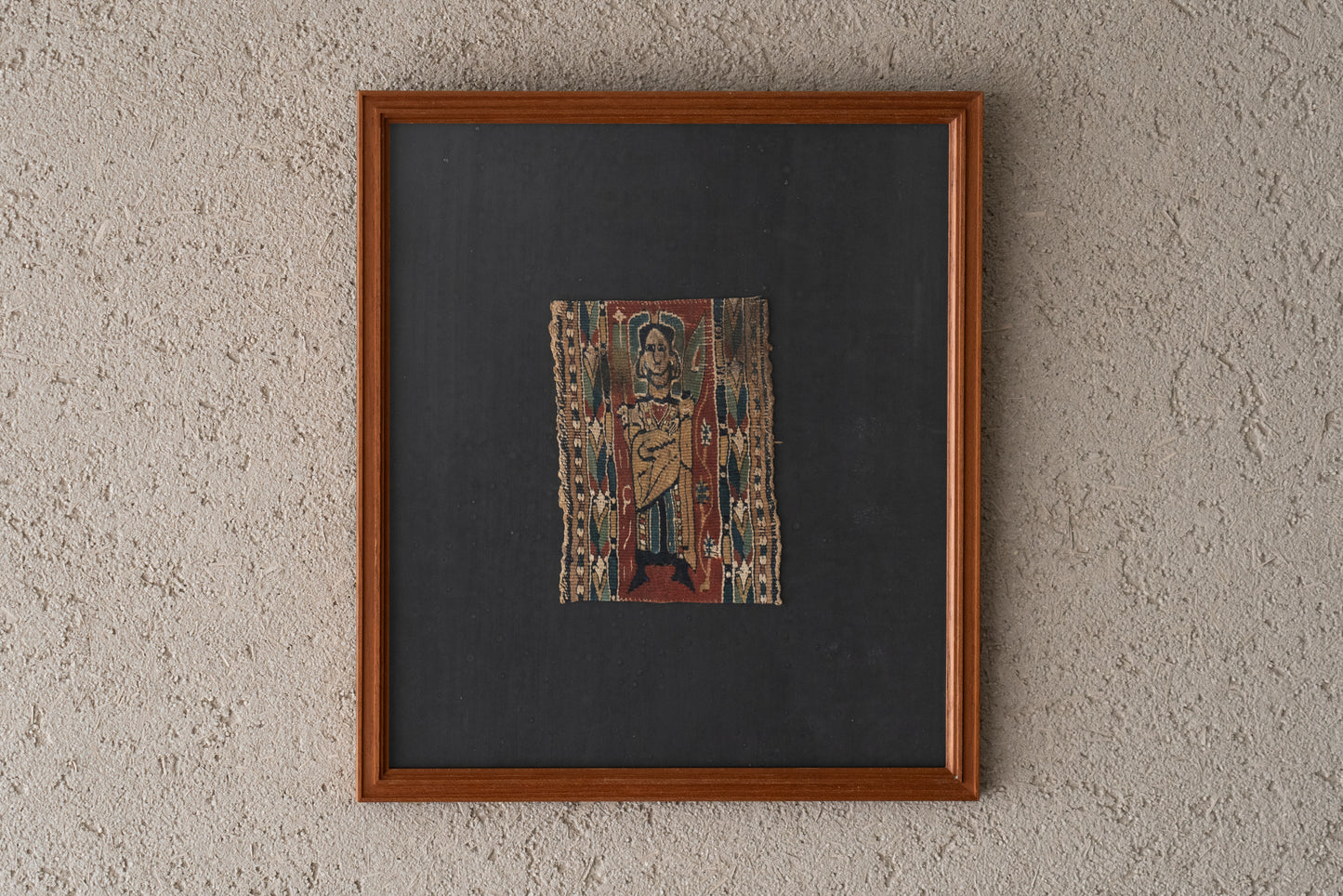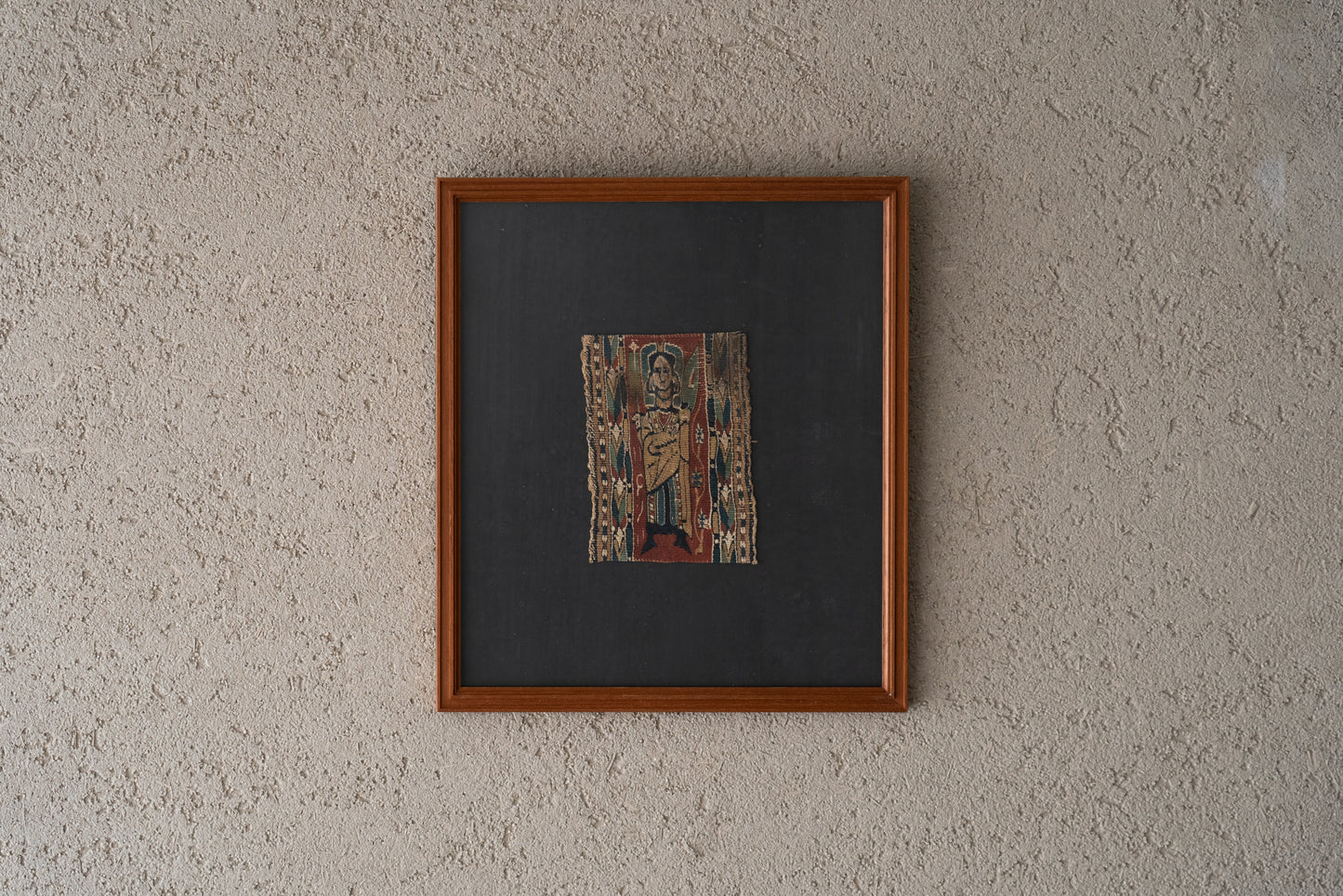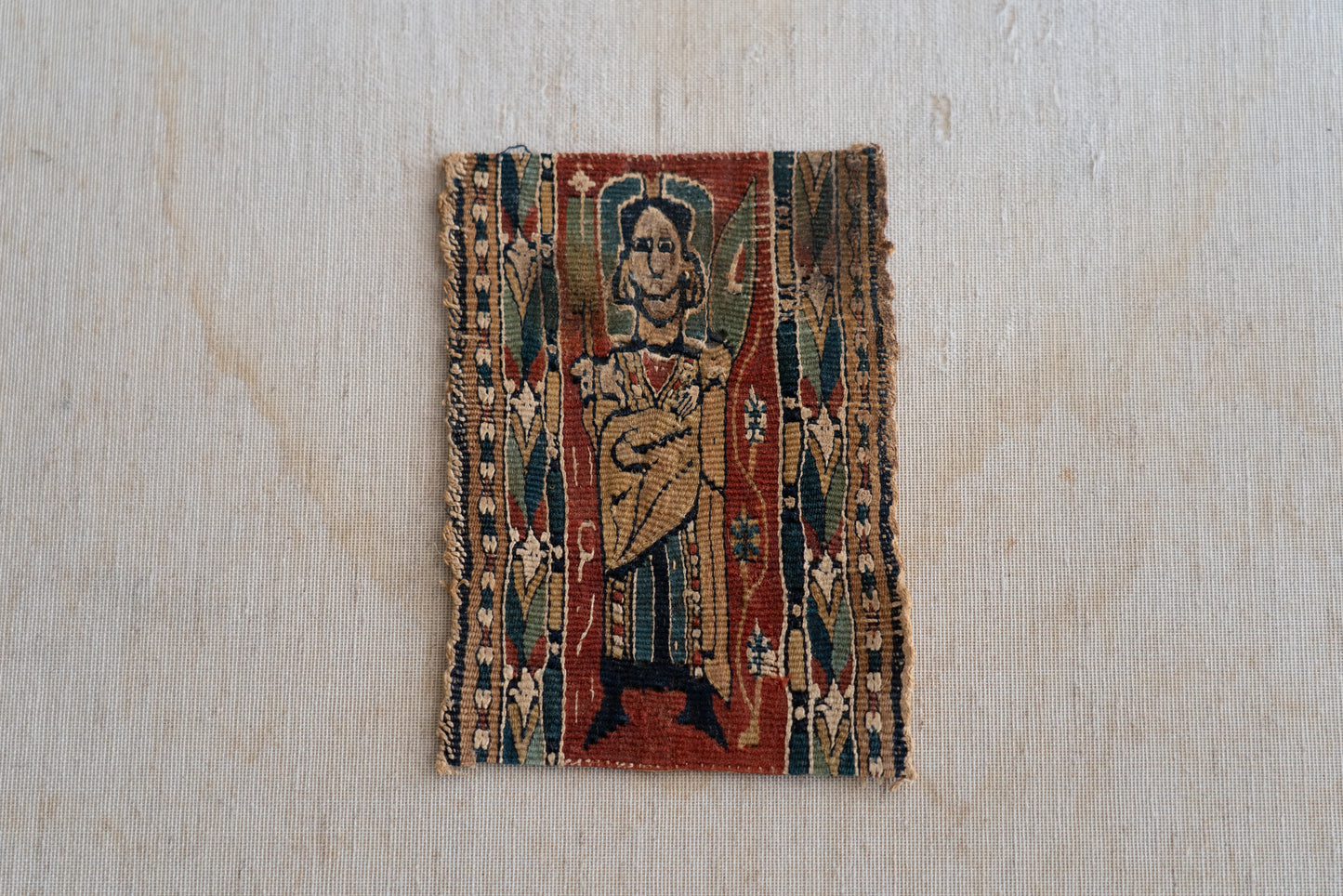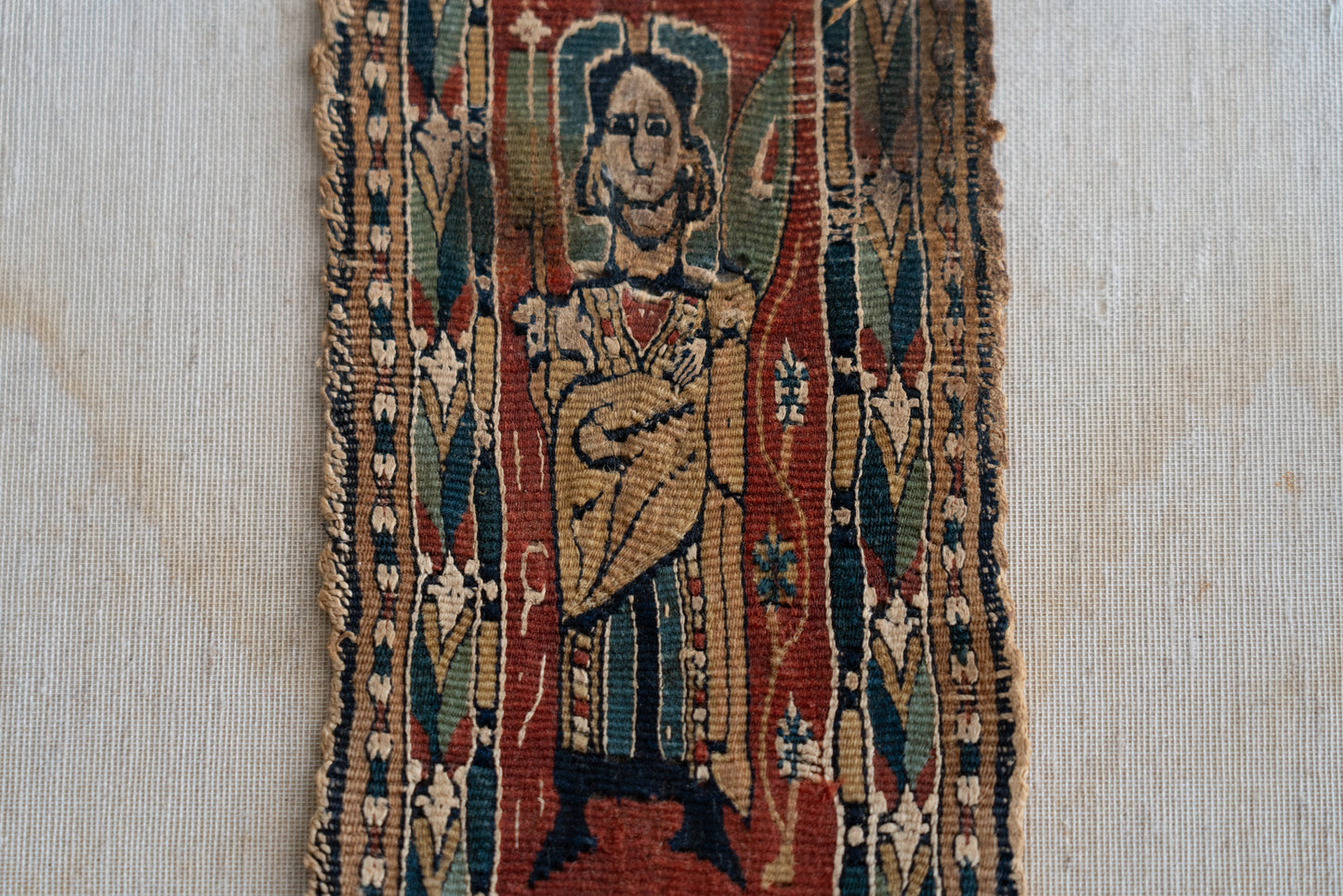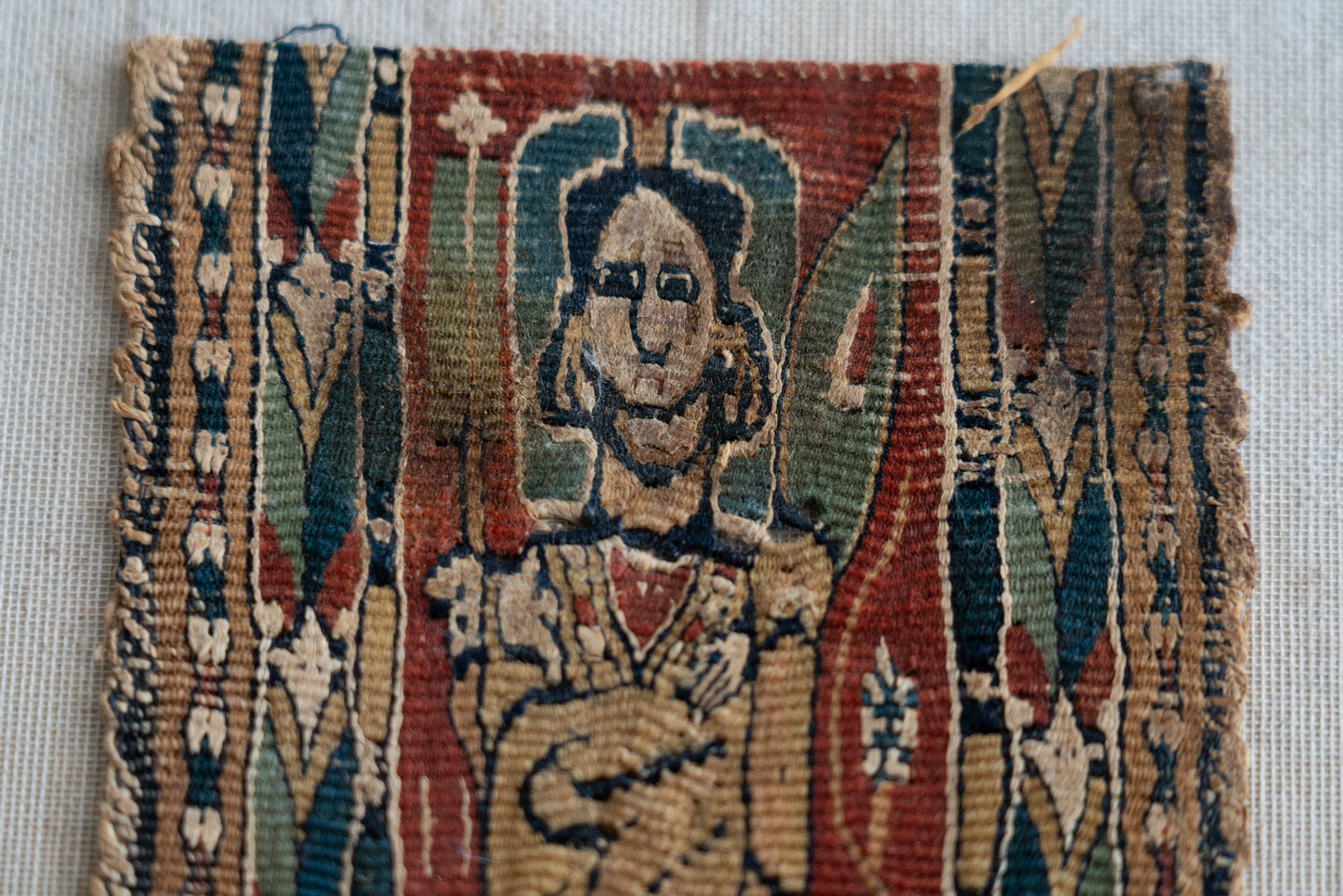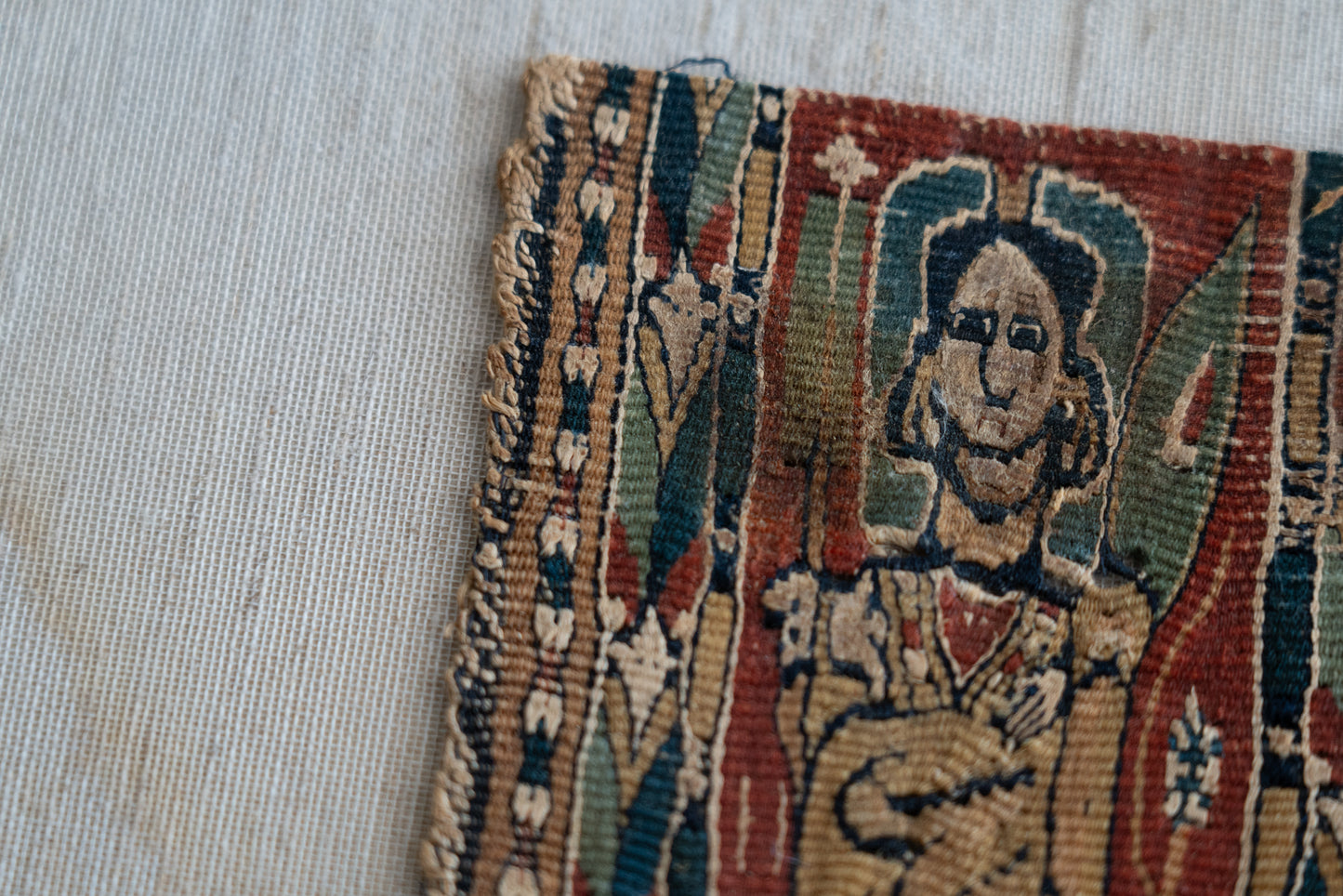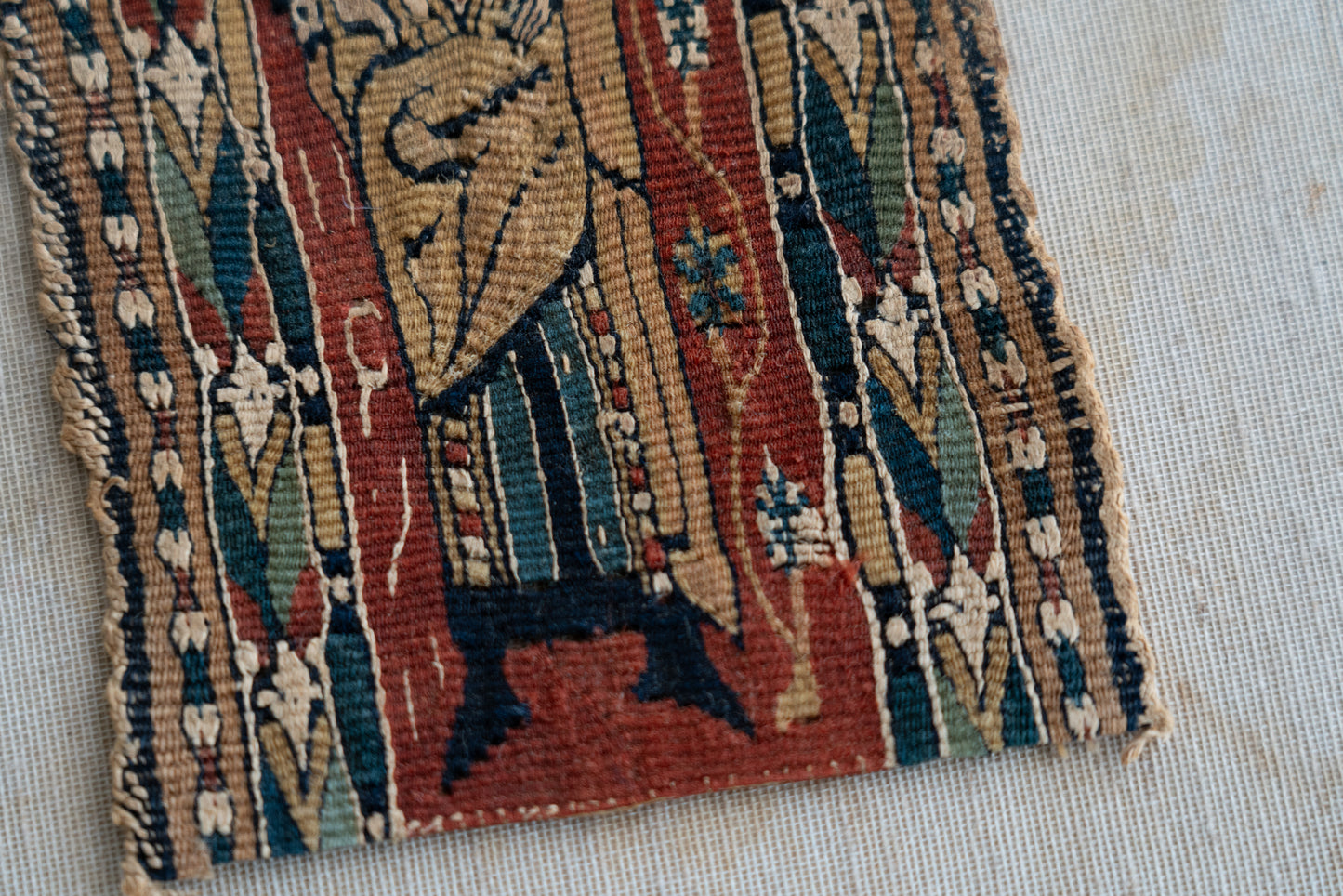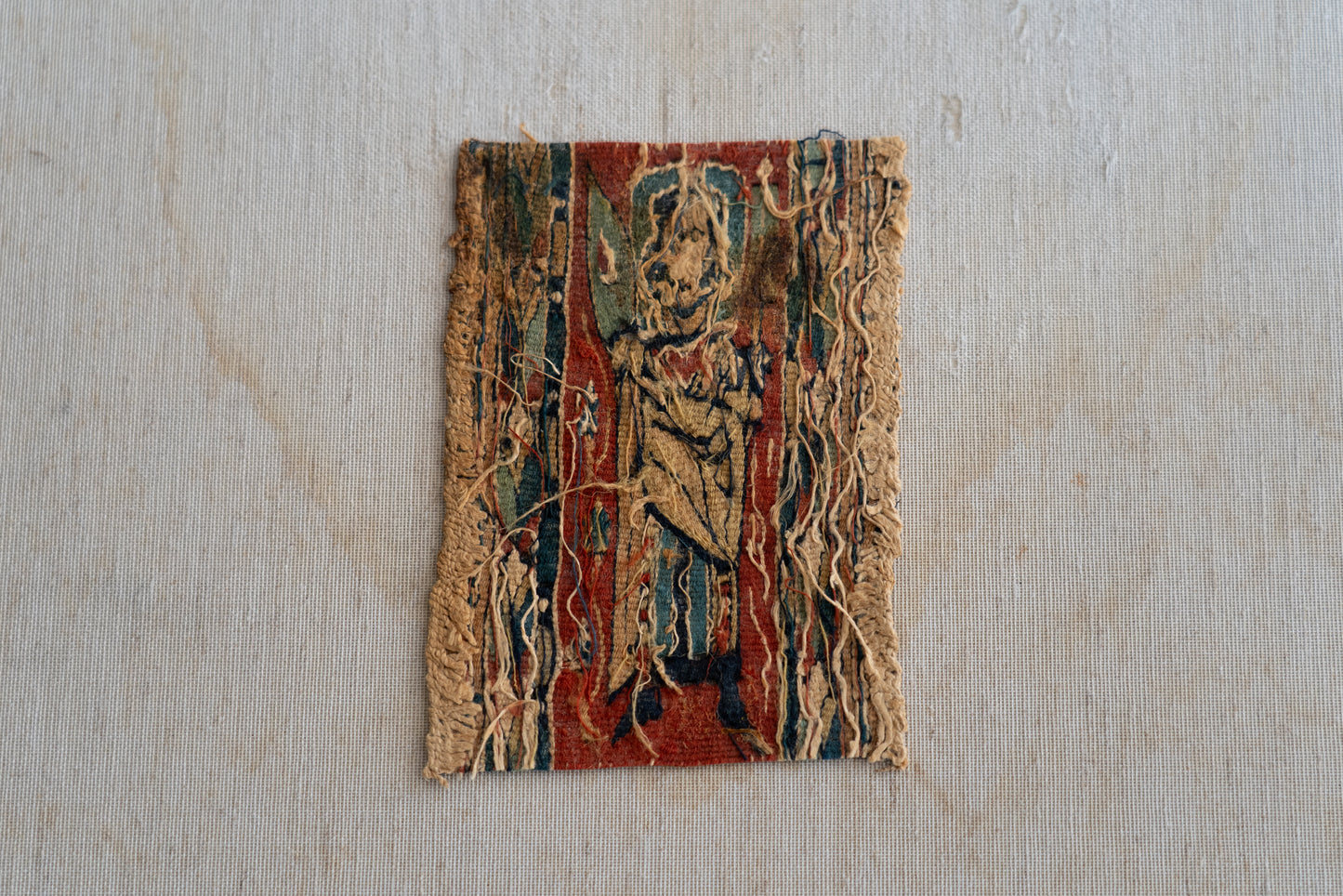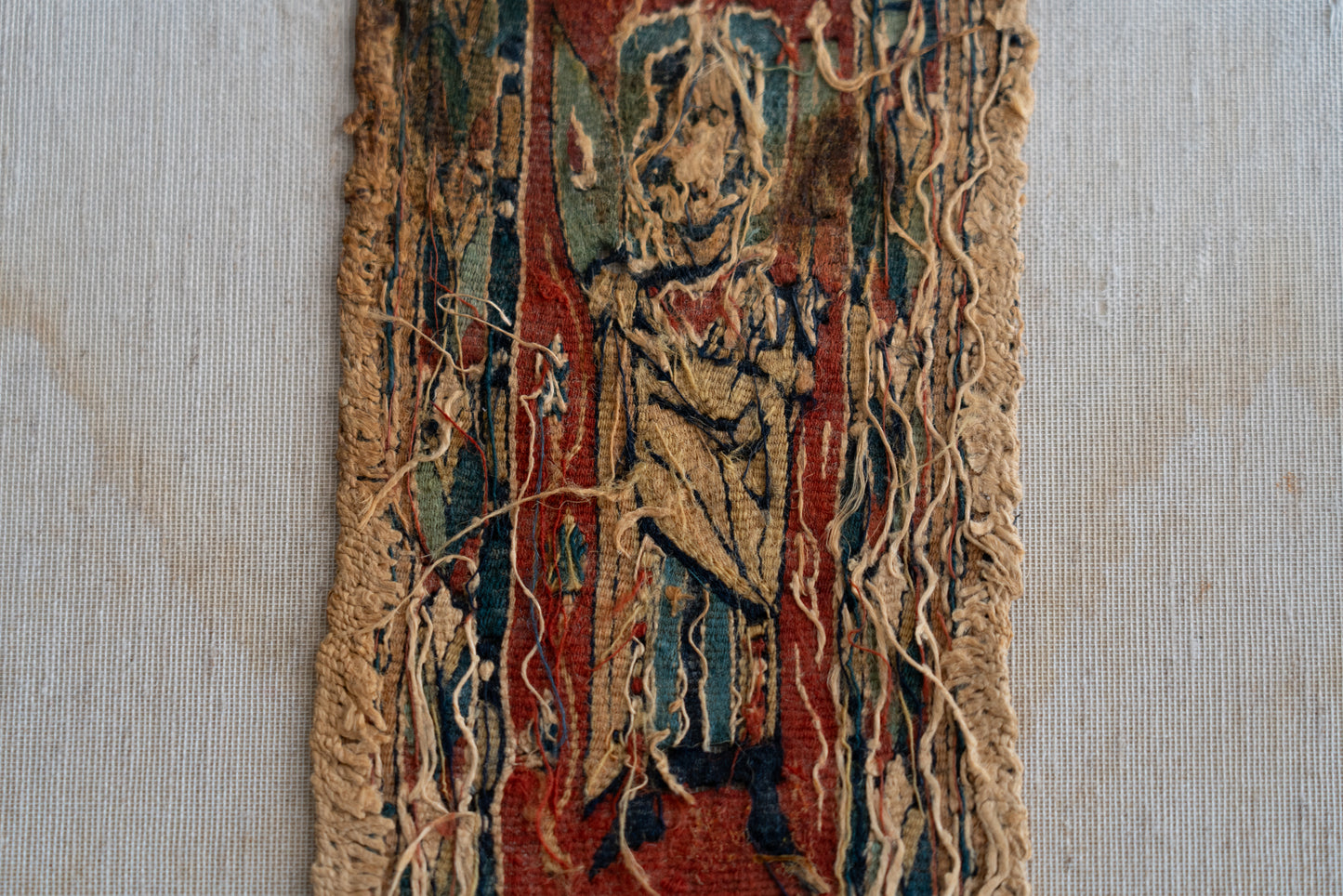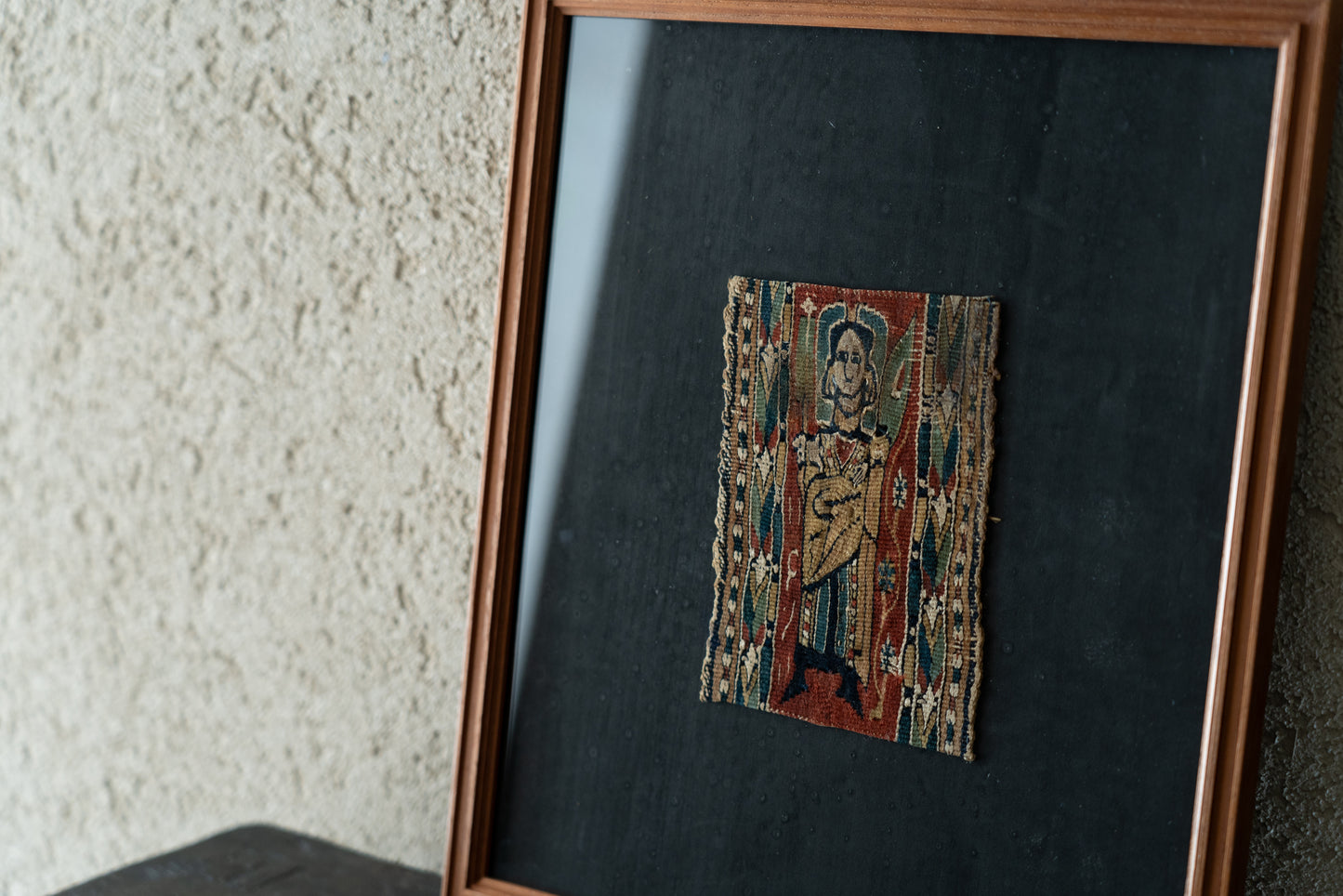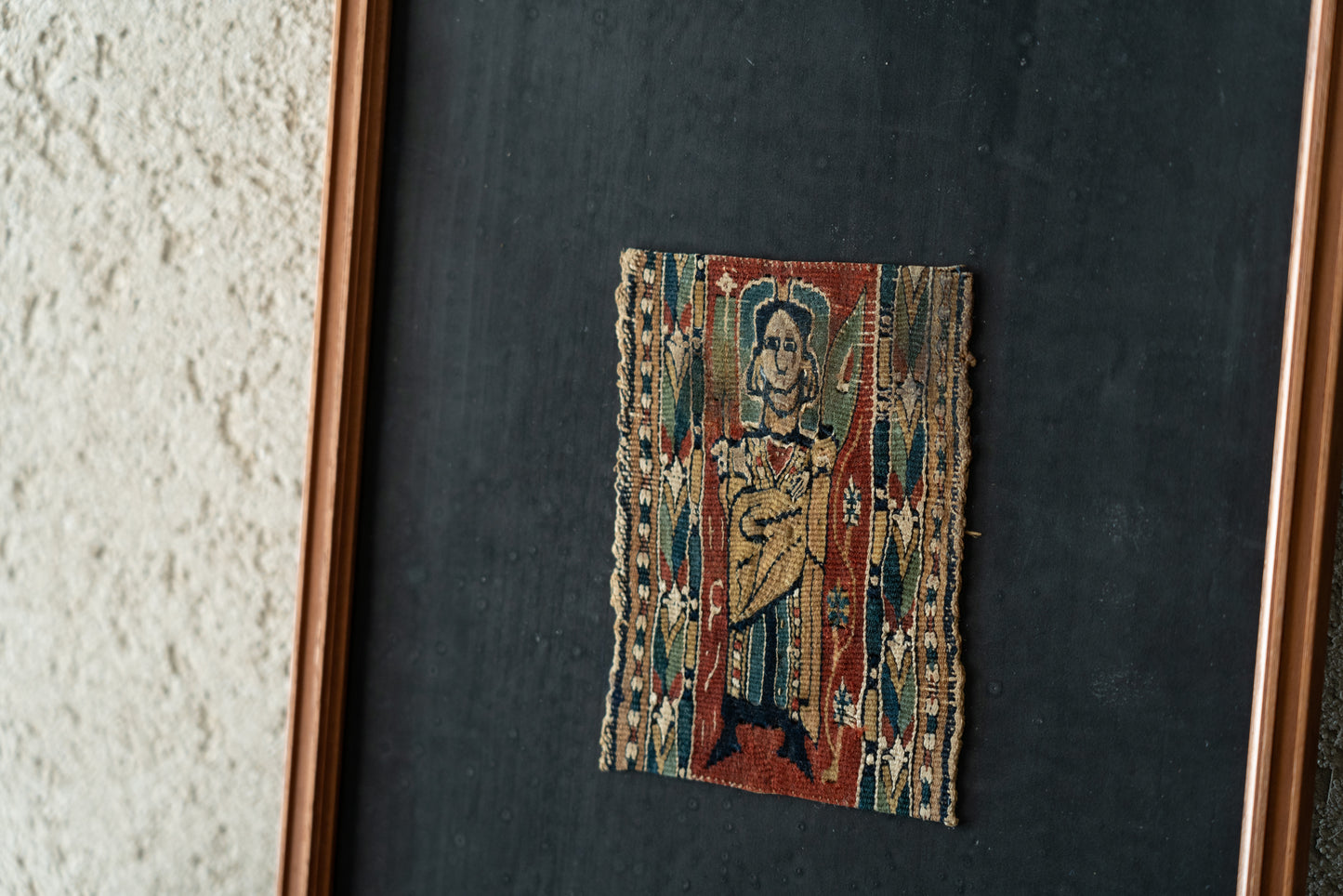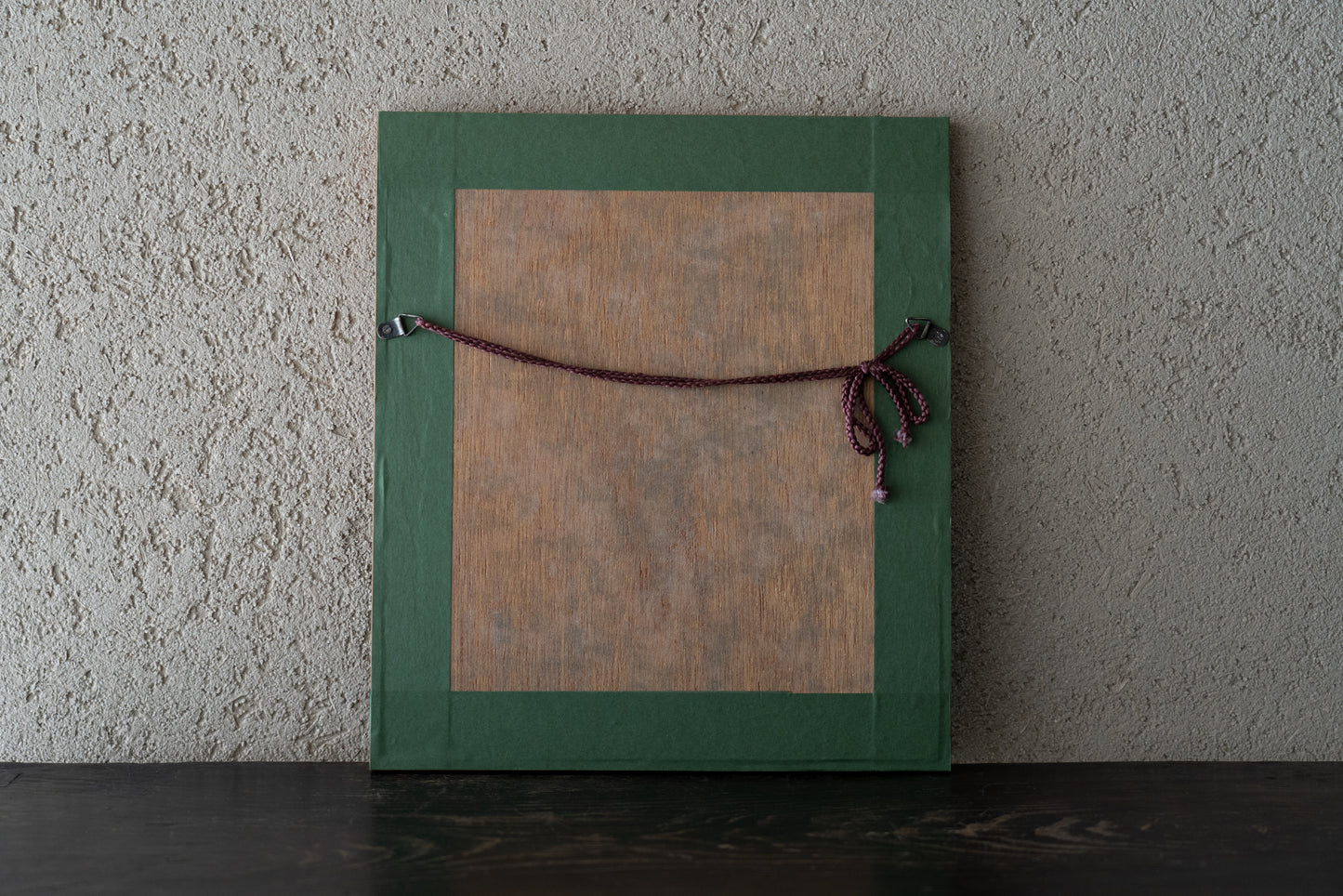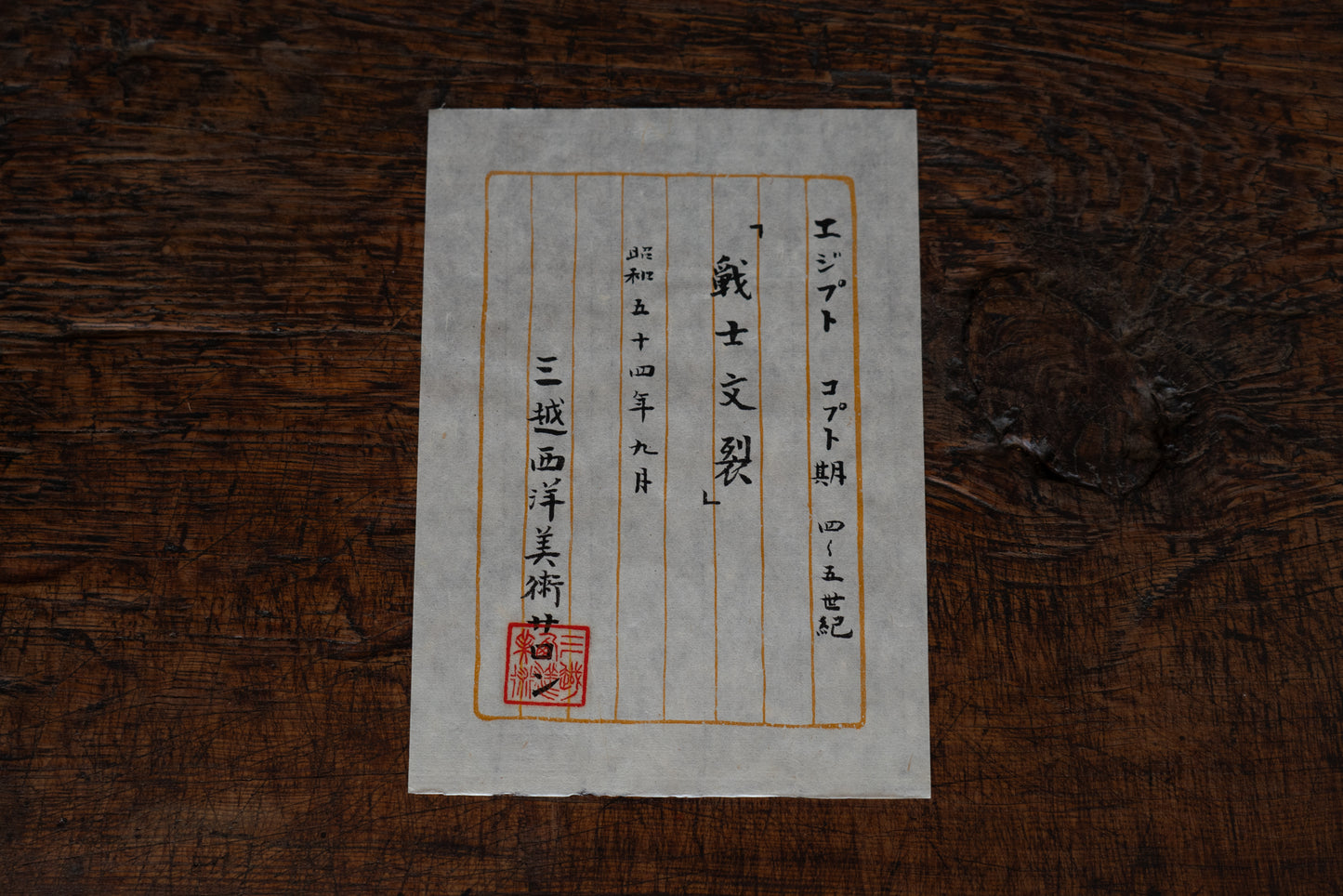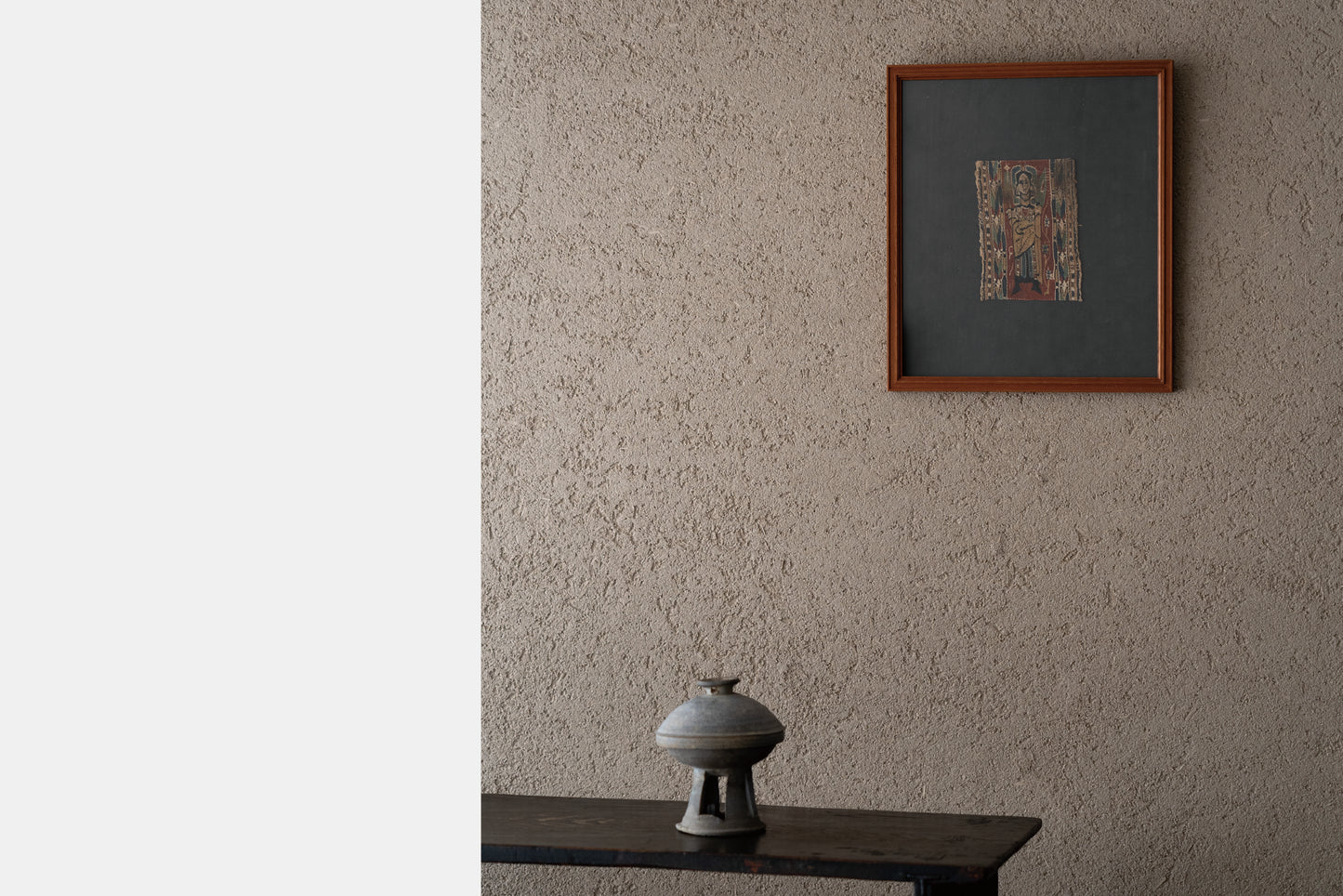Coptic Textiles with Angel Design
- Region/Era Around Egypt (Byzantine cultural area) / 6th-8th centuries
- Size Frame: H32.6×W28.6cm Textile: H14.0×W10.2cm
- Condition Reinforcement from the back
- Accessory box, frame and Certificate of Western Art Salon at Mitsukoshi
- No. 42nk-79
Beautiful Coptic textile with angels woven into it.
Based on its dimensions, it is thought to be a decoration around the shoulders of a tunic.

Coptic textiles were originated and developed by the Copts in Egypt.
Coptic textiles can be divided into three periods: early (3rd to mid-5th century), middle (5th-8th century), and late (8th-12th century), with the middle period, the 5th-8th century, said to be the peak period.
In this work, an angel is depicted on a brightly colored vermilion ground, surrounded on both sides by a series of geometric patterns.
The figure in the center can be identified as the Archangel Michael by his halo, wings, right-hand spear, and front shield.

The charm of Coptic clefts lies in the simplicity of their form.
In the mid-19th century, the patterns on Coptic clefts became less realistic and more stylized, with more caricatured figures, animals, and plants being depicted.
The angels depicted in this work also have an appealing appearance that is somehow familiar in its solemn atmosphere.
The warm and free expression resonates with the hearts of those of us living in the modern age.

In the early period, most of the patterns were woven in black on a light brown ground, but in the middle period, when this piece was probably woven, many of the patterns were woven in flashy colors.
The vermilion background, the geometric patterns in the surroundings, and the angel's garment are all full of the charm of the middle period, and one never gets tired of looking at them.

The Metropolitan Museum of Art in New York has a copy of the same pattern in its collection. From this similar piece, it is clear that a hunting pattern was woven above and below the angel design.

 Overall view and enlarged image of the angel design in the collection of the Metropolitan Museum of Art.
Overall view and enlarged image of the angel design in the collection of the Metropolitan Museum of Art.
(Source: https://www.metmuseum.org/art/collection/search/474229 Metropolitan Museum of Art)
Also included is a certificate from the Western Art Salon at Mitsukoshi

This certificate lists the warrior design and the period as 4th-5th century, but as a result of our research, we have determined that it is 6th-8th century based on the depiction of angels and the characteristics of the design and coloring, etc.
For more information, please see the following blog.
The background is made of black Japanese paper to accentuate the color of the sAKI, and it is framed so that it can be displayed and enjoyed.
The frame can be opened and changed to a background of your choic

Since this is an excavated piece, a few flaws and stains are unavoidable.
It has been slightly reinforced from the reverse side, but this is not visible from the surface.
Compared to the piece in the collection of the Metropolitan Museum of Art, it is clear that this piece is in excellent condition.

This small and beautiful piece, measuring 14 cm in length and 10 cm in width, is sure to bring you a taste of Byzantine style.
[Related articles]
▶ Web store "Coptic textiles with birds and geometric designs"
▶︎ blog "Coptic Textile with Angel design"
To pick up and see the actual item in the gallery.
Reservation